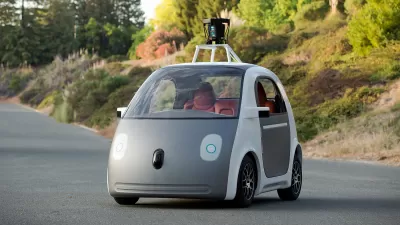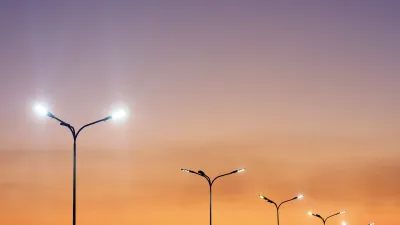Self-driving cars process a tremendous amount of data to pilot themselves through crowded streets. That computing power needs electricity, and lots of it.

Different modes of transportation pose different engineering problems. One such engineering problem tis how much power self-driving cars use. In the old days, self-driving cars needed extra space and power to hold the computers and monitors they carried. "Today's self-drivers don't need extra engines, but they still use terrific amounts of power to run their onboard sensors and do all the calculations needed to analyze the world and make driving decisions," Jack Stewart reports in Wired.
Why does this matter? Besides using electricity, which can come from sources that release carbon and air pollution, it can also limit the range of vehicles. It's an issue many are looking to tackle. "At CES last month, Nvidia put the spotlight on a new processor designed specifically for autonomous vehicles, called Xavier. It has an eight-core CPU and 512-core GPU, a deep learning accelerator, computer vision accelerators, and 8K video processors," Stewart reports. But even this powerful processor is likely not enough to run a fully autonomous vehicle.
If processors don't become more efficient, they will have another problem beyond limited range: the vehicles could become hot. "That heat is wasted energy, and it’s also not something you want in your car on a hot day. Some robocar prototypes need water-cooling with hoses and radiators, which eat up even more space," Stewart writes.
FULL STORY: Self-Driving Cars Use Crazy Amounts of Power, And It's Becoming A Problem

Planetizen Federal Action Tracker
A weekly monitor of how Trump’s orders and actions are impacting planners and planning in America.

Map: Where Senate Republicans Want to Sell Your Public Lands
For public land advocates, the Senate Republicans’ proposal to sell millions of acres of public land in the West is “the biggest fight of their careers.”

Restaurant Patios Were a Pandemic Win — Why Were They so Hard to Keep?
Social distancing requirements and changes in travel patterns prompted cities to pilot new uses for street and sidewalk space. Then it got complicated.

Platform Pilsner: Vancouver Transit Agency Releases... a Beer?
TransLink will receive a portion of every sale of the four-pack.

Toronto Weighs Cheaper Transit, Parking Hikes for Major Events
Special event rates would take effect during large festivals, sports games and concerts to ‘discourage driving, manage congestion and free up space for transit.”

Berlin to Consider Car-Free Zone Larger Than Manhattan
The area bound by the 22-mile Ringbahn would still allow 12 uses of a private automobile per year per person, and several other exemptions.
Urban Design for Planners 1: Software Tools
This six-course series explores essential urban design concepts using open source software and equips planners with the tools they need to participate fully in the urban design process.
Planning for Universal Design
Learn the tools for implementing Universal Design in planning regulations.
Heyer Gruel & Associates PA
JM Goldson LLC
Custer County Colorado
City of Camden Redevelopment Agency
City of Astoria
Transportation Research & Education Center (TREC) at Portland State University
Camden Redevelopment Agency
City of Claremont
Municipality of Princeton (NJ)





























